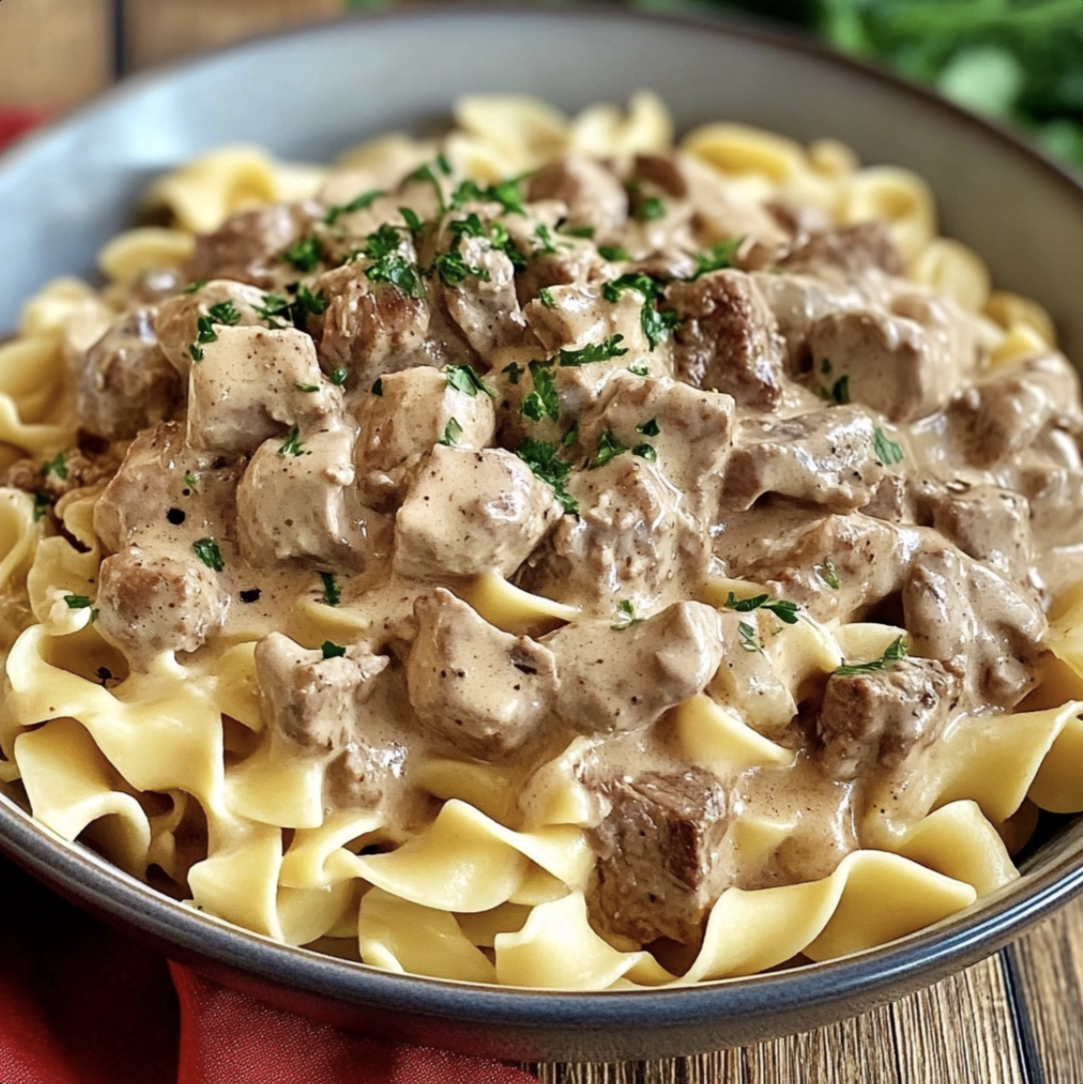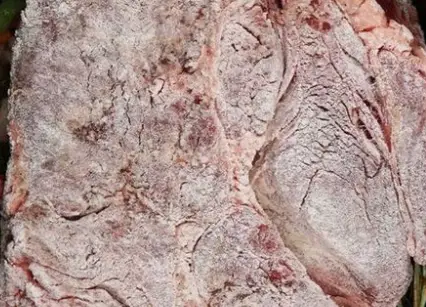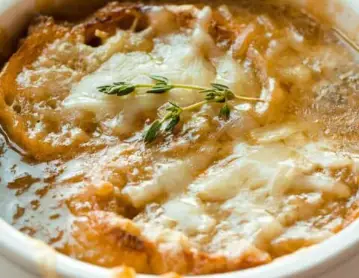This is a classic recipe that uses stale bread and transforms it into a delicious, comforting dessert. Soaking the bread in milk helps soften it, while eggs and sugar provide richness and sweetness, resulting in a creamy, custard-like texture.
Ingredients:
- 4-5 cups of stale bread or rolls, torn into pieces (French bread or any leftover bread works)
- 2 cups of whole milk
- 3 large eggs
- ¾ cup sugar (adjust to taste)
- 1 teaspoon vanilla extract
- 1 teaspoon ground cinnamon
- ½ cup raisins or dried fruit (optional)
- Butter (for greasing the baking dish)
- Powdered sugar or syrup for serving
Instructions:
1. Prepare the Bread:
If your bread isn’t already stale, you can dry it out in the oven by placing the bread pieces on a baking sheet and baking at 300°F (150°C) for about 10 minutes. This step helps the bread absorb the liquid better without becoming mushy.
2. Soak the Bread:
Place the stale bread pieces into a large mixing bowl. Pour the milk over the bread, ensuring that all pieces are well-soaked. Let the bread sit for 10-15 minutes to absorb the milk, becoming soft and pliable.
3. Make the Custard:
In a separate bowl, whisk together the eggs, sugar, vanilla extract, and cinnamon. If you want to add raisins or any dried fruit, now is the time to stir them into the custard mixture.
4. Combine the Bread and Custard:
After the bread has soaked up most of the milk, gently fold the custard mixture into the bread. Be sure to combine everything thoroughly, so the bread is evenly coated in the egg mixture. The texture should be moist but not overly liquidy.
5. Prepare the Baking Dish:
Grease a baking dish with butter to prevent sticking. Pour the bread and custard mixture into the dish, spreading it out evenly.
6. Bake:
Preheat your oven to 350°F (175°C). Bake the bread pudding for about 40-45 minutes, or until the top is golden brown and the custard has set. You can test by inserting a toothpick into the center—it should come out clean when the pudding is done.
7. Serve:
Allow the bread pudding to cool slightly before serving. Dust the top with powdered sugar or drizzle with syrup for added sweetness. Serve warm and enjoy the soft, custard-like texture with a slightly crisp top.
Why Bakers Soak Bread in Milk
The secret to why bakers soak bread in milk lies in how it rehydrates and softens the bread, making it the perfect base for custards, savory bread dishes, or even a decadent breakfast dish like French toast. Here are a few reasons this technique works so well:
- Moisture Absorption: Milk acts as a liquid that rehydrates stale or dry bread, allowing it to regain its soft texture. This is important for recipes that rely on the bread’s ability to absorb flavors, such as bread pudding or French toast.
- Creaminess: Milk adds a creamy richness to dishes. When combined with eggs or other ingredients, it creates a smooth, custardy texture that enhances the dish’s flavor.
- Enhanced Flavor: Milk contains natural fats and sugars that enrich the bread’s flavor, making it taste better than it would if soaked in water alone. This simple step elevates the overall taste of the final dish.
Variations and Uses for Milk-Soaked Bread
The technique of soaking bread in milk can be applied to both sweet and savory dishes. Here are a few ways you can use this method:
1. Savory Bread Casseroles
For a savory twist, you can use milk-soaked bread as a base for casseroles. Combine soaked bread with eggs, cheese, vegetables, and herbs, and bake it to create a hearty, flavorful dish. This is perfect for breakfast or brunch.
2. French Toast
French toast is another example of how soaking bread in milk works wonders. By soaking thick slices of bread in a milk-egg mixture, you can create the perfect French toast with a crisp exterior and a soft, custard-like interior.
3. Savory Stuffing
For savory stuffing recipes, milk-soaked bread can be combined with sautéed onions, herbs, and spices to create a moist and flavorful stuffing. This is a great way to use up leftover bread during the holidays or for a Sunday roast.
4. Bread Crumbs
If you have leftover stale bread and don’t want to bake it into a dish, you can soak the bread in milk, then blend it into fine crumbs. These milk-soaked bread crumbs can be used to thicken soups, sauces, or even to form the base for homemade meatballs or burgers.
Tips for Success
- Use Stale Bread: Stale or day-old bread works best for this method because it’s dry and will absorb more liquid without falling apart. Fresh bread may become too mushy when soaked in milk.
- Add Flavor: Whether you’re making a sweet or savory dish, don’t forget to season the milk-soaked bread mixture with spices, herbs, or extracts like vanilla or cinnamon to enhance the flavor.
- Use Different Types of Bread: You can use various types of bread for different textures and flavors. French bread, brioche, and even whole wheat bread all work well with this technique.
Bakers’ Secret Revealed
Soaking bread in milk may seem like a simple step, but it’s a powerful technique used by bakers to transform stale or dry bread into something rich, flavorful, and versatile. Whether you’re making bread pudding, French toast, or a savory casserole, this technique allows you to get the most out of your leftover bread while adding moisture and flavor to your dishes.
So the next time you have some day-old bread on hand, remember this baker’s secret and turn it into something delicious! Whether you’re creating a sweet dessert or a savory breakfast, soaking bread in milk is a technique worth mastering






